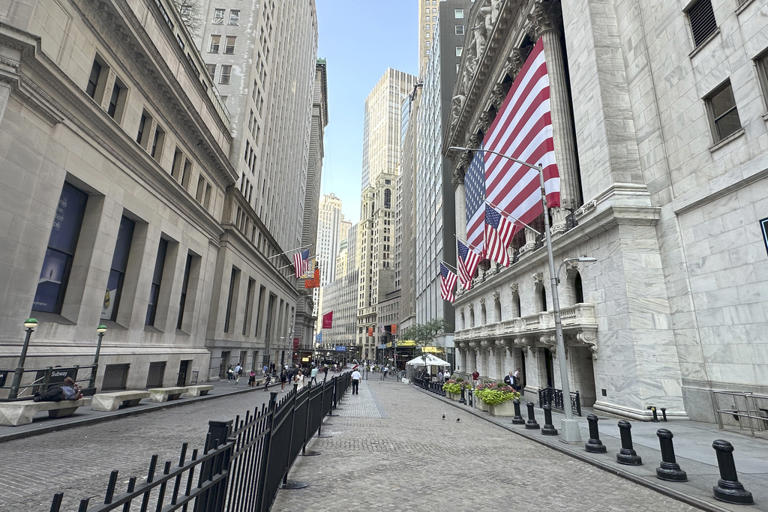On Friday, Wall Street’s trading activity was notably subdued, as U.S. stocks displayed a cautious stance amidst the backdrop of a global technology outage that has impacted a range of industries. The S&P 500 index remained relatively unchanged, signaling stability in the face of the broader market’s challenges. In contrast, the Dow Jones Industrial Average fell by 206 points, or 0.5%, as of 10:20 a.m. Eastern Time. Meanwhile, the Nasdaq composite index experienced minimal movement, reflecting a period of relative calm despite earlier volatility.
The technology outage, which has disrupted operations worldwide, was a major factor influencing market behavior. This outage affected various sectors, including airlines, banking, and healthcare services, causing widespread operational issues. Cybersecurity firm CrowdStrike, which investigated the situation, determined that the outage was not a result of a cyberattack but rather a malfunction linked to a faulty update sent to computers running Microsoft Windows. This incident led to a notable decline in CrowdStrike’s stock, which plummeted by 9.6%. On the other hand, Microsoft’s stock remained largely unaffected by the disruption, reflecting investor confidence in its ability to manage the situation.
The ripple effects of the outage were particularly pronounced in the airline industry. Travelers at airports around the world faced long lines and significant delays due to disruptions in check-in procedures. Although these initial problems led to declines in airline stocks, the sector showed some recovery by midday. United Airlines, for instance, managed a slight gain of 0.1% despite acknowledging potential delays and issuing waivers to ease travel plan adjustments. In contrast, American Airlines Group and Delta Air Lines saw minor declines of 0.3% and 0.4%, respectively, indicating ongoing challenges despite partial recovery.
Corporate earnings reports also played a critical role in shaping stock market movements. Comerica, for example, experienced a substantial drop of 12.7% in its stock price despite reporting stronger-than-expected earnings for the spring quarter. The decline was attributed to the bank receiving preliminary notice that it would not continue as the issuer of the Direct Express debit card program, a key financial service for approximately 4.5 million federal benefit recipients. Conversely, American Express saw a drop of 4.1% in its stock price after its quarterly revenue fell short of analysts’ forecasts, despite reporting better-than-expected profits.
In the financial sector, Huntington Bancshares emerged as a positive performer, with its stock rising by 3% following a strong profit report and an increase in total deposits. Netflix also experienced fluctuations in its stock price but ultimately remained flat after reporting stronger-than-expected profits for the latest quarter.
In the energy sector, Halliburton’s stock fell by 4.1% after the company reported profit figures that met analysts’ expectations but missed revenue targets. Conversely, SLB (formerly known as Schlumberger) saw a 3.7% increase in its stock price, driven by its performance surpassing profit expectations.
Overall, the S&P 500 index is on track for its worst week since April, despite having reached an all-time high earlier in the week. This downturn has been particularly severe for Big Tech stocks, which have been significant contributors to market gains this year. Nvidia, for instance, has seen its stock rise by more than 140% year-to-date, fueled by enthusiasm around artificial intelligence technology. However, the high valuations of these stocks have made them susceptible to corrections, contributing to the broader market decline.
This period of volatility highlights a broader market rotation, where there is a shift away from high-growth tech stocks towards smaller and value-oriented stocks. This rotation reflects changing investor sentiment and could offer long-term investment opportunities, according to Brian Jacobsen, chief economist at Annex Wealth Management. Jacobsen notes that while this rotation might result in smaller and value stocks outperforming in the short term, it could also provide significant opportunities for long-term growth.
In the bond market, yields remained steady on Friday. The yield on the 10-year Treasury note held at 4.20%, indicating stability in bond market conditions amid the broader market turbulence. This steadiness in yields provides a counterpoint to the volatility observed in the equity markets.
Internationally, stock indexes exhibited mixed performance. In Europe and Asia, indexes generally showed lower results. Hong Kong’s index fell by 2%, reflecting concerns over the broader market conditions, while Shanghai’s index rose by 0.2% after Chinese officials briefed reporters on the outcomes of a significant meeting of the ruling Communist Party. This meeting outlined a sweeping blueprint for advancing China’s technology sector, financial markets, and living standards, which provided some positive sentiment to the market.
In summary, the current market environment is characterized by a mix of stability and volatility. The technology outage has had far-reaching effects on various sectors, contributing to the broader market challenges. Amidst this backdrop, the performance of individual stocks and sectors reflects the complex interplay of global events, corporate earnings, and investor sentiment.
